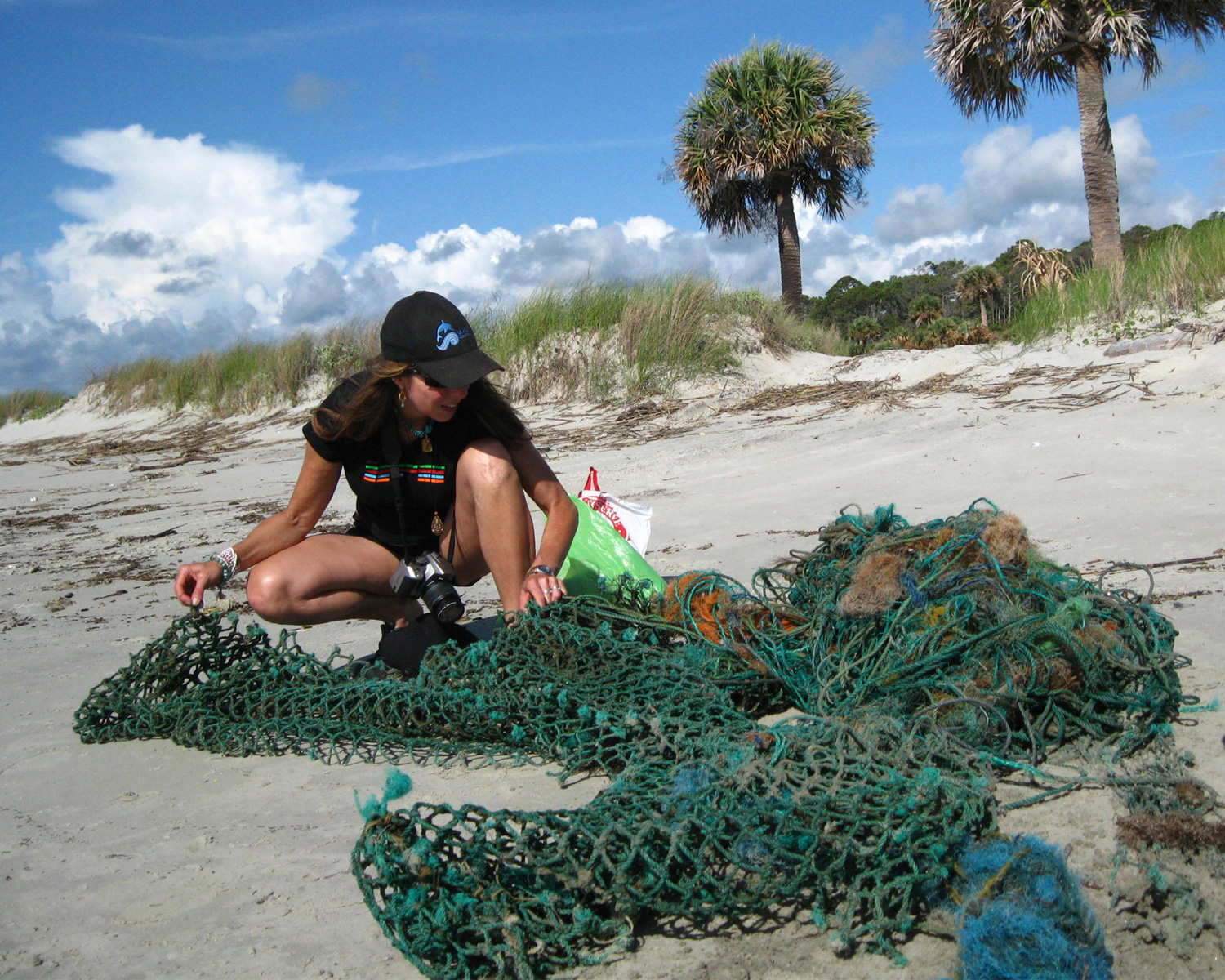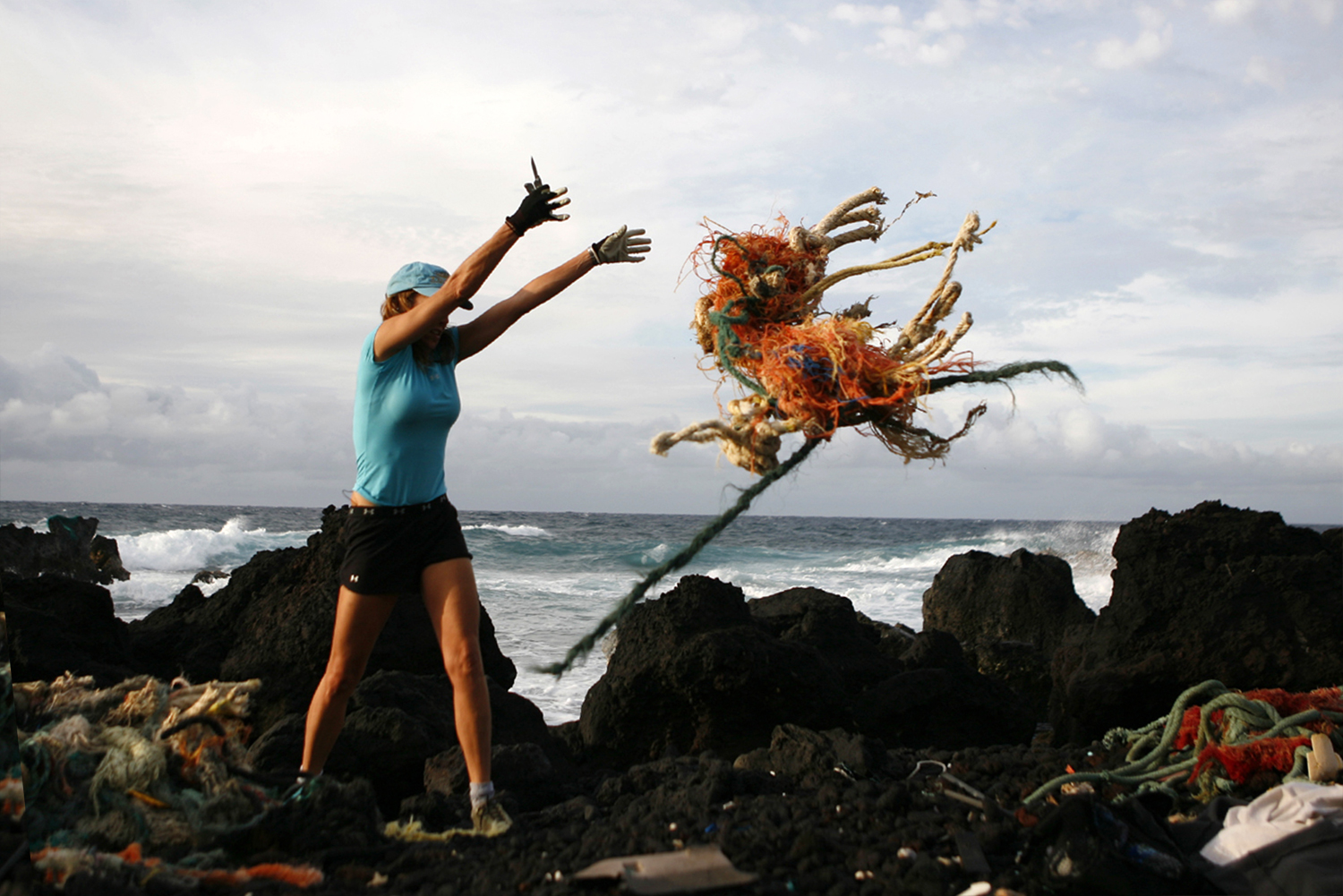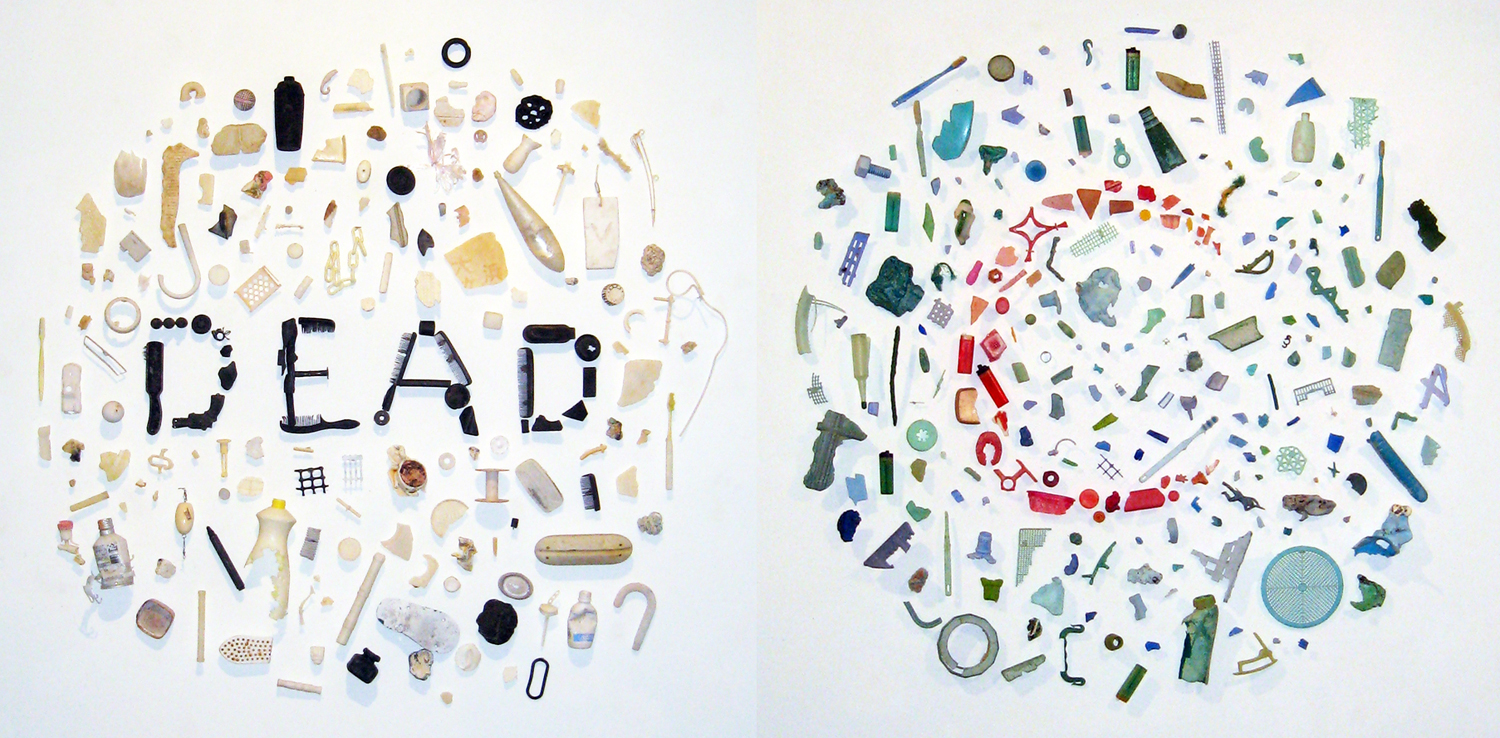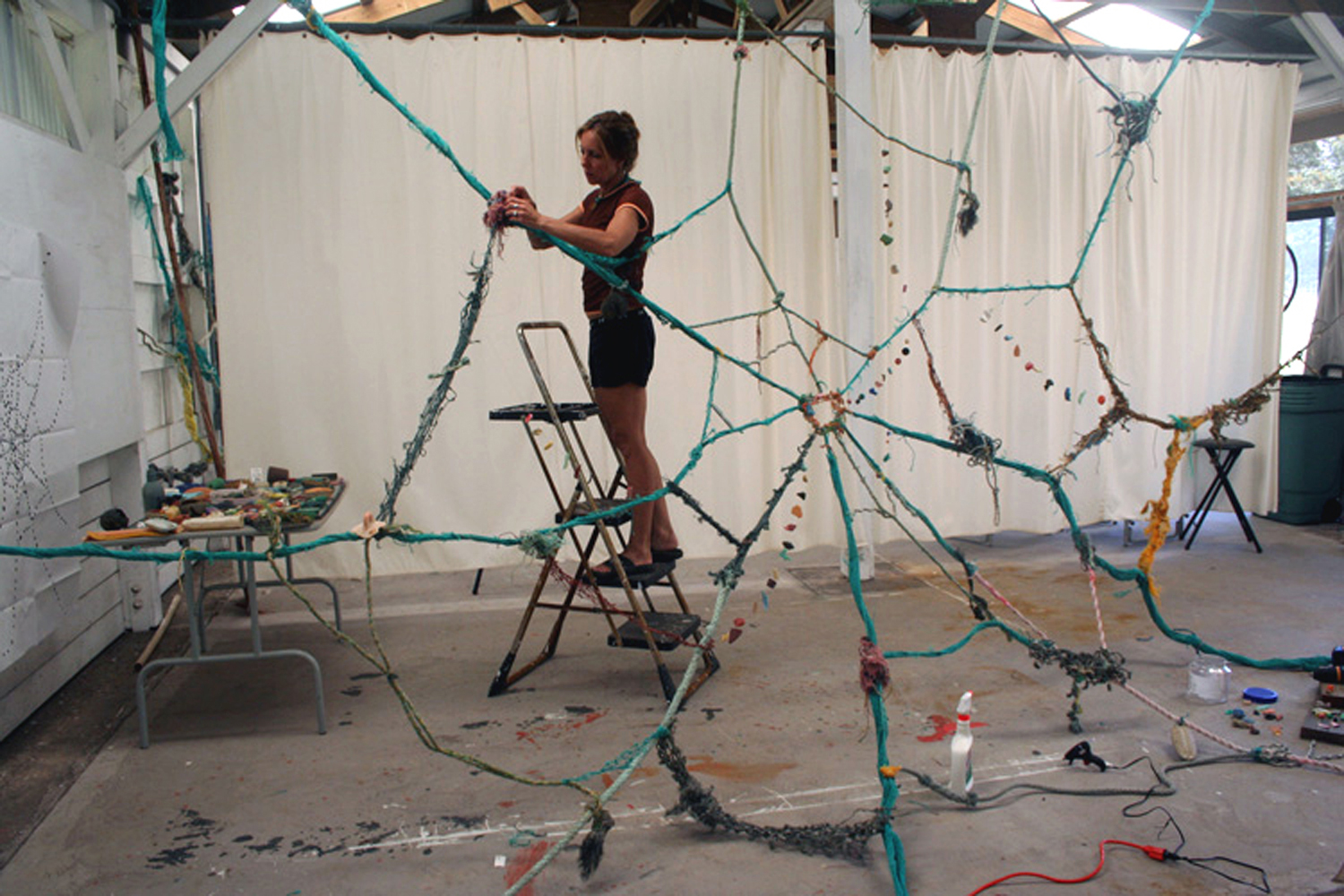Flotsam & Jetsam
Pam Longobardi creates art with plastic objects collected on beaches. Her work reveals just how big our oceans’ plastic problem has become.
Harmony: Here are a few things we’ve read about you: Artist, advocate, professor, surfer. How would you describe yourself?
Longobardi: Those are all true, and to that list I would add seeker and activist. I put myself into both extreme and ordinary environments because I just want to know—to learn as much as possible about the mysteries of the planet while I am here, to stare closely and watch nature going about its business is most fascinating and humbling. And activist, because in all of those situations, even the most remote and pristine and wild, you see the heavy hand of human waste and lack of foresight, and to this I have outrage that I can’t contain. How can we be so stupid with our capabilities and intelligence to wreck the magic engine of nature on this planet we are riding on? We have to do better than that.
Harmony: How did you get started working with plastic?
Longobardi: I was trained as a painter and printmaker, but have always worked in varying mediums from photography to installation, allowing the ideas to dictate the materials I work with. In 2006, after discovering the mountainous piles of plastic debris the ocean was depositing on the remote shores of Hawaii, I began collecting and utilizing this plastic as my primary material.
Harmony: Do you have a favorite medium and if you could choose to work in another you’ve never worked with, what would it be?
Longobardi: Even with all the plastic work, I maintain a studio practice in painting that involves collaborating with natural processes in cyanotypes or with patinas on copper. I like anything that involves water and change over time. If I could work in a new medium I don’t have access to now, it would be glass. It’s ancient, like sand, and almost alchemical.
Harmony: Tell us about the Drifters Project.
Longobardi: The Drifters Project was conceived in 2006, but its origins are in my work of the past two decades. Since then, I’ve made scores of interventions, cleaning beaches and making collections all over the world, removing thousands of pounds of material from the natural environment and re-situating it within the cultural context for examination.
My original and ongoing site is Hawaii, but to date I have worked directly through local sponsorship, small grant support and personal expenditure with communities in Beijing, China (NY Arts Beijing, 2008); in Atlanta, Georgia (New Genre Landscape, 2008); in Nicoya, Costa Rica (Chorotega Sede/Universidad Nacional, 2009); in Samothraki, Greece (EVROS Cultural Association and PAI 2010); in Monaco (Nouveau Museo National de Monaco 2011); in Seward, Alaska (Alaska SeaLife Center 2011): and in Kefalonia, Greece.
Harmony: Do you make your pieces where you find the materials or bring the materials back to your studio?
Longobardi: Both. My collection missions initially were done solo but now I am working with and training community groups as well. I approach the sites as a forensic scientist, examining and documenting the deposition as it lay, taking photographs of sites as I find them and then collecting and identifying the evidence of the crime, the plastic. Sometimes I make work on site if I can, and other times I carry the stuff away and recombine it in larger works later. I have a system of identifying the date and location of the collection as part of the study of its transport. I feel the ocean is communicating with us through the materials of our own making. It is giving us messages, and my job as an artist is to read these, interpret them and show them to others.
Harmony: In 2008 the Marine Debris division asked you to be a part of the first-ever roundtable assembled to develop an official Pacific Garbage Patch policy. Tell us about that experience.
Longobardi: It was a great honor and marked a change in business as usual to have artists at the table of a scientific and policy-making governmental organization, thanks to forward thinking individuals Carey Morishige and Kris McElwee of the Marine Debris division of NOAA (National Oceanic and Atmospheric Administration) for the Pacific Region. This culminated last March in the NOAA and UNEP (United Nations Environmental Program) co-sponsored 5imdc, the 5th International Marine Debris Conference in Honolulu.
The truly unique thing about this conference was the enormous presence that art had at what was basically a scientific conference. UNEP and NOAA invited me to put together the art program. It brought together 440 people from 36 countries, activists like Plastic Pollution Coalition and Surfrider, artists, scientists, plastic industry people and the “Honolulu Commitment” was drafted. The artist/activist contingent worked very hard to get specific language about micro-plastics, endocrine disruptors, and heavy metal contamination into the document that all parties agreed to. It felt momentous.
Harmony: Tell us about the expedition team you’re on that will be leaving from Alaska later this year.
Longobardi: I am working on a project with the Alaska Sealife Center and the Anchorage Museum that will send a team of artists and scientists to the remote stretch of the Aleutian Islands off Alaska that form the northern rim of the North Pacific Gyre. We filmed a promotional video last summer that involved a beach landing in Resurrection Bay, with Carl Safina, lead scientist, and myself surveying the site and discussing the debris there. This project is very large scale and a year away, but I have already been working on it for over a year and it is growing and taking shape. It’s very exciting—there is an amazing group of artists: Mark Dion, Alexis Rockman, Andy Hughes from UK, and Sonya Kelliher-Combs, a native Alaskan artist.
Harmony: How has the ocean figured into your personal history?
Longobardi: My father was an ocean lifeguard on the Jersey shores and my mother was the Delaware state diving champion, so we were water people. Every summer we went to the shore in NJ, and then when I was 12 and we moved to Atlanta, it was the Gulf Coast. Jacques Cousteau was my childhood hero, and I credit his TV show that I watched every week, for creating my ecological consciousness.
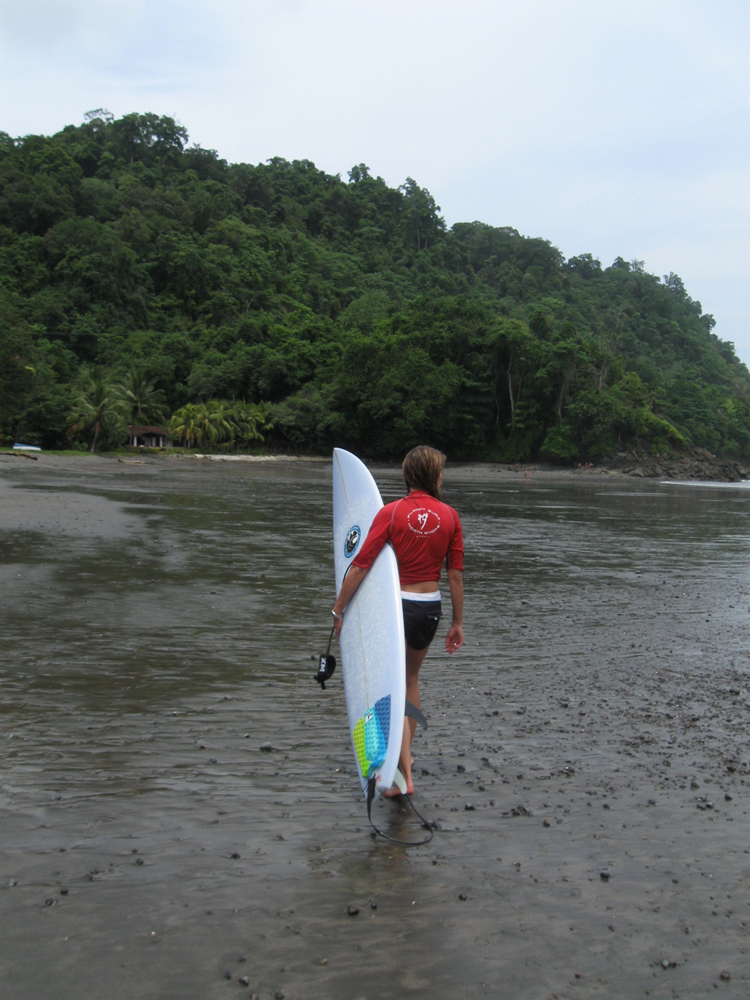 |
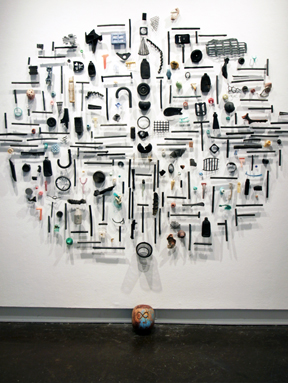 |
Harmony: Is there one thing people could do to lessen their personal impact or reverse damage that has been done?
Longobardi: Quit using disposal plastic shopping bags and water bottles. (I guess that’s two.) But they’re both too awful. If you want to see why those bags have to go, check this video: it’s a young whale dying with a stomach full of bags that he’s trying to cough up.
Sea turtles also eat these all the time, floating in water they look just like the jellyfish they are supposed to be eating. And plastic water bottles are sick for humans too: at temps over 70 degrees (that’s room temperature) they leach Bisphenol And phthalates, both are endocrine disruptors that mimic estrogen, causing a host of problems in humans. That horrible taste of warm plastic bottle water is a toxic soup of chemicals. Drink out of a stainless steel refillable bottle, it’s fresh and delicious and toxic-free. Most municipal water is cleaner and safer than any plastic water. I even drink tap water in Costa Rica and never have a problem.
Harmony: Tell us about your upcoming projects.
Longobardi: I have an ongoing connection to Costa Rica and am going to start a project to assist the turtle refuge near Tullan. I worked with a turtle rescue group in Greece last summer as part of a larger project there in Kefalonia, and I am going to return to expand it. I also have a show in Berlin in May that is about plastic and oil. And then there’s Alaska!
Read more about Pam Longobardi’s work on her website.

